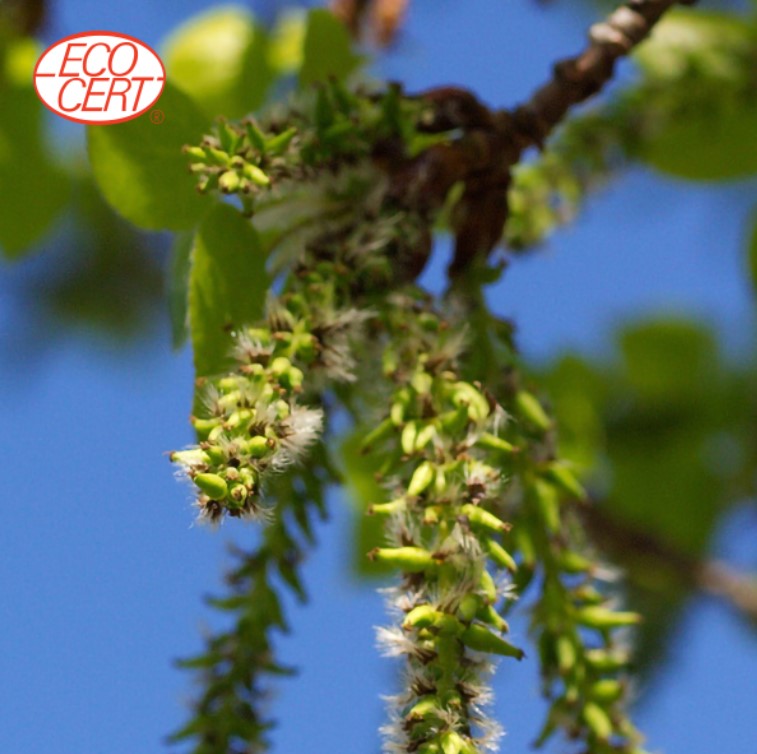Product Description
Latin Name: Pinus banksiana
Latin Name: Populus balsamifera
French Name: Peuplier Baumier
English Name: Balsam Poplar
Family: Salicaceae
Origin: Quebec, Canada
Harvest time: April to May
Distilled Part: Branches and buds
Organoleptic Specificities: Liquid, very light yellow, sweet and resinous
Components: α-Bisabolol, t-Nerolidol, α-Amorphene, δ-Amorphene, δ-Cadinene
ORIGIN
Balsam Poplar is a tree native to Canada, which is found in northern Quebec. It is the only leafy tree in the northern villages able to withstand our winter temperatures. This large tree can measure up to 35 meters in height and can live up to 70 years. Balsam Poplars thrive in moist soils often found at the edge of aqueous environments. It can also grow in sandy soils. In the countryside, it is often planted and used by humans as a windbreak.
The young tree is recognizable by its greenish-gray bark, which gradually turns to gray with age, eventually developing cracks. Its leaves are ovate in shape. They are rounded at the base, then taper into a point at their ends. Dark green in color, they have very small teeth along their edges and can measure between 7 and 12 cm.
In the springtime, a very pleasant smell emanates from these resin-soaked buds. Which earned it its name Poplar Balsam, because not only does it perfume the air with this beautiful smell of sweet resin, but it also gives a balm with very interesting therapeutic characteristics.
HISTORY
Balsam Poplar was highly valued by Native American populations for its medicinal properties. Indeed, it was traditionally mostly used to help with skin problems or lung infections. Although it was also used for more generalized care treatment. The Balsam Poplar has various different advantages, for example, it was also used as a cleanser for hair, as well as clothing made out of deer skin.
The Iroquois used Balsam Poplar for arthritis, skin rashes and even as a laxative. They also made a decoction to give to horses for the treatment of worms.
Contra-indications: None, at physiological doses.
Recommendation: Essential oils are wonderful for the well-being of humans, animals, insects and plants. There are many books that discuss aromatherapy and you should refer to them for proper and safe use. We also recommend that you consult a professional in aromatherapy who will be able to target the biochemical groups and aromatic molecules of essential oils and thus increase the effectiveness of your care.
Essential oils should be stored in a cool, dry place, protected from light and air.
